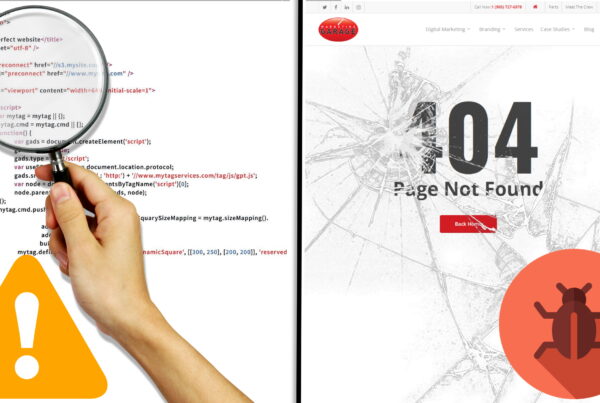
As a Toronto marketing company in the trenches of the digital marketing revolution, we’ve witnessed the rise of video marketing as a key tool in your marketing toolbox. In fact, partly because of algorithm changes, views of branded video content have increased:
- 258% on Facebook and
- 99% on YouTube as of June 2017
And, when deployed on your site, videos have been shown to increase conversion by 20% and average order value by 19%.
Sounds great but given that there’s 100 hours of video uploaded to YouTube every minute, how do create video content that will get found and be successful for your business? Here’s a hint; the most important part of the video production happens before the shoot. It’s all about the pre-production!
Here’s a 20 step checklist to successful video marketing pre-production:
1. What Are Your Goals For The Video?
Define how you are going to measure success, for example:
Simple Brand Awareness (Views and Reach)
Leads
Actual Purchase of Product or Service. Different goals will have different video marketing strategies.
2. Who Is Your Audience?
Define the buyer persona (Demographic, Hobbies/Interests, Why the product or service fits their lifestyle, any fears that need to be overcome? Use online listening like keyword research to identify their need.)
Writing with one specific person in mind allows you to tell a true, and relatable, story.
Craft the message to the buyer persona: what they find entertaining and how the product or service relates to them.
3. What Is Your Best Marketing Message?
If the business is made up of multiple products/services, don’t be tempted to do a single video trying to explain everything. A tailored video with a specific message and a specific goal will be much more effective in the long run. We use online testing to determine the best marketing message before we invest the bigger bucks in video production.
4. What Is Your Video Marketing Budget?
Knowing your budget ahead of time frees you up to narrow down what you can and cannot do for any given project
Don’t forget to line item the budget like costs related to: script-writing, graphic introduction, talent, production, editing, even your post-production marketing of the video.
5. Decide Your Video Length
Best practice according to sites like Wistia is that your video has only got up to 2 minutes to hold your viewer’s attention as 59% finish videos that last 90 seconds or less and only 36% finish videos 5-10 minute videos. This means that a good 90-second video will hold a viewer’s attention as much as a 30-second video.
6. Write and Revise a Script
Before moving forward with pre-production, write (and re-write and re-write) the script because the final version will determine in large part, the course of your production and post-production schedules. And Search Engine marketing matters here too if you want to get your video found so build a keyword-rich script including video titles.
7. Get To The Point Within 8 Seconds
The average attention span is just 8.5 seconds. Maybe that’s why YouTube considers a video ‘viewed’ after 8 seconds. So make sure your first 8 seconds has enough ‘pull’ to get you through the rest. The first 8 seconds are just enough to include a brief greeting that states who the speaker is, what brand they are representing and what they’re going to talk about.From here it’s best practice to start “mid-res”, which is considered “in the middle of a story” to kick the viewer into an excited state so that they can hear your why. The why is the reason that they will benefit from your product or service – it’s the problem that your company can resolve for them.
8. Include Greetings and Sign-Offs
Properly introduce the premise of the video – too much subtlety can reduce the impact of the video.
Include some form of a Call To Action at the end of the video – there is a reason why Ellen Degeneres and Jimmy Fallon do short video clips on YouTube and point for viewers to make sure to Like and Subscribe to their channels.
9. Be Transparent and Authentic
The last step for effective script writing is transparency and authenticity.
Nielsen reports 83% of consumers trust their peers over companies, so it could be worthwhile to have an influencer actor whom the target market trusts.
This will also lead to the brand as being seen as an expert in their product or service space.
10. Create a Storyboard
Just as a script is indispensable, a storyboard is invaluable as an efficient way to visualize the shoot before it happens and make adjustments based on insights from the process.
The storyboard should take the script and verify its possibility.
Where does the light come from?
What does the location need to have for the production to work?
What tools will each shot require in order for them to look and feel the way the script intended?

This video for the Travel Industry Council of Ontario had a .31% click-through, was fully viewed 34% of the time and significantly boosted viewer’s likelihood of booking their next trip with a TICO-registered agent.
11. Make a Shot List
This is a shot-by-shot breakdown of each scene
Example:
Scene/Shot Number: Scene 1 / Shot 1
Location: Marketing Living Room
Description: This scene opens up with people hard at work on the large grey couches closest to the window. This shot should help viewers to understand the size of the room and the large number of employees at the company.
12. Studio or Location?
Usually budget dependent, studios will already have everything in place for you to work with and you can show up with your actors, whereas shooting on location involves travel and equipment costs.
13. Visit ALL Locations Ahead of Time
Even if you decide to shoot in a studio, still visit beforehand. If shooting on location, visit to determine which will be most problematic and allow determination for time of day (lighting) and for events such as inclement weather.
14. Inventory Equipment You Already Have
And test all of it to make sure it works!
This will help you determine what, if any, equipment will need to be rented and be sure to have backup for your actual shoot in case something breaks or a light burns out.
15. Determine Your Equipment Needs
Ideally, equipment needs to be handled by a production manager, while for smaller projects the videographer should be the one making the call.
Keep in mind that while understanding the basics of a script, storyboard, shot list and even production schedule are fairly straightforward, knowing why a wide angle lens steady camera is the best choice for a specific 3-second shot is not so intuitive.
16. Choose Your Marketing Talent….Wisely
Often, the narrator in a large-scale business will be someone from the C-Suite. But if they can’t act, gently let them know it and turn to a professional actor.
If budget is an issue to hiring talent, identify a long-term talking head for your video whom could also be used for other projects, such as starting a company vlog.
17. Create a Production Schedule
Example of a spreadsheet production schedule:
Date Time Location Shots Equipment Talent Contact Info
18. Overestimate the Time You’ll Need
Generously! If you think it’s going to take approximately 15 minutes to shoot a scene, allow for 30 minutes.
Talent challenges, bathroom breaks, lighting malfunctions, audio interruptions and more unexpected occurrences make this a necessity.
19. Have A Call Sheet
The call sheet is the all-important companion sheet to the production schedule that includes the contact information of every member of the film production crew as well as actors.
A good call sheet will answer all the basic “who, what, when, where, why” and be used as both a daily checklist for role call to the emergency contact list when you are missing a key player in the shoot.
20. Practice!
The importance of line readings and rehearsals cannot be understated because it’s a good idea to get your talent familiar with locations, dress, directions, etc. before they show up for the actual shoot.
Video marketing is definitely worth all the work. After all, people remember 20% of what they hear, 30% of what they see and 70% of what they hear and see. Happy shooting!
Pssst: Click here to see a great example of video marketing?
The Marketing Garage is an award-winning Toronto marketing company that cuts through the digital marketing hype to deliver real results. Our unbiased, data-driven audits help you understand what’s working. And what’s not. Read some marketing case studies or give us a call to pop the hood on your marketing.
0 0 0
How else can Digital Marketing help you?
Learn MoreAre you ready to have a conversation?
Talk To UsMore Advice From a Toronto Marketing Company





